11 Best Recipes With Luya: Filipino Ginger
Luya is a root vegetable that is often used in Filipino cuisine. It has a slightly bitter and sharp taste and is usually cooked with other vegetables or meat.
If you’re looking for something different to add to your dinner rotation, why not try cooking with luya? This unique vegetable can be used in a variety of dishes, so you’ll never get bored.
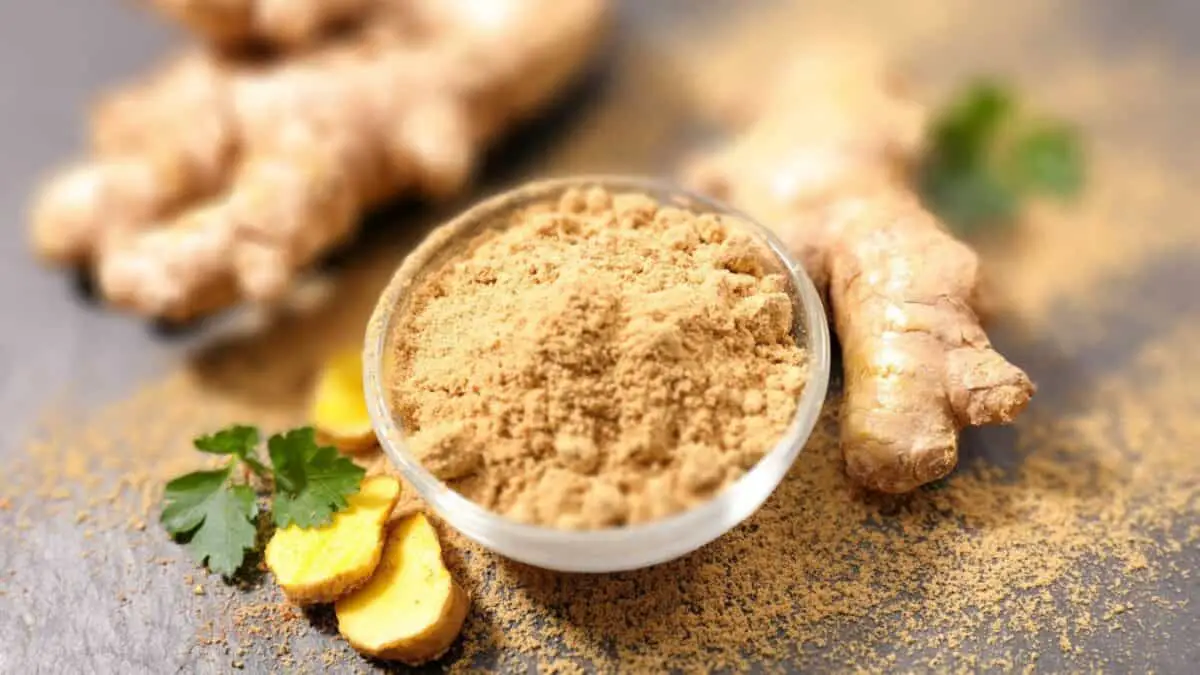

Check out our new cookbook
Bitemybun's family recipes with complete meal planner and recipe guide.
Try it out for free with Kindle Unlimited:
Read for freeIn this post we'll cover:
Best 11 recipes with luya
Filipino Sweet and Sour pork

It’s a dish that’s well-loved by the whole family and is one of the regular dishes you will see on the dining table on special occasions.
The ginger (luya in the Philippines), gives it a nice kick.
The blending of the sweetness and sour taste of the dish makes it very delectable.
But although it’s always been associated with the Chinese people, Sweet and Sour Pork Recipe has also been one of the preferred Filipino Foods.
Filipinos have adopted this as their very own dish and you can see this in almost any household gatherings.
Paksiw na bangus

No doubt, paksiw na bangus is an amazingly simple and delicious dish for seafood lovers. However, some can’t get the recipe perfect. It’s a subtle balance of ginger (luya), vinegar, garlic, and patis (fish sauce).
By following the below tips, there’s nothing to stop you from making the recipe to perfection!
Escabeche sweet & sour fish

The aroma of ginger in escabeche is so appetizing. The ginger strips serve 2 purposes: to give an aromatic flavor and to lessen the fishy odor of the fish.
There are also red and green bell peppers to add some slight capsicum flavor. The carrots are sliced thinly, and some are carved into small flowers for plating and garnishing.
Pesang isda
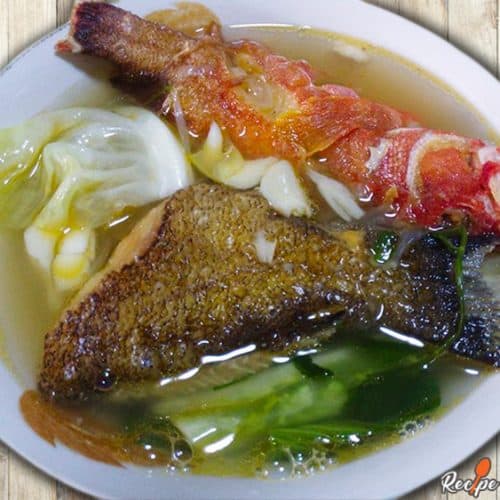
This recipe is simple and easy to follow, as this is mainly a ginger stew with a strong fishy flavor!
The fish commonly used for this recipe is dalag (murrel) or hito (catfish); however, you can actually use any type of fish for this recipe. One perfect substitute is tilapia.
Aside from fish, the recipe also includes heaps of sliced ginger to counter the strong fishy smell of the fish and also to act as the main driver of the taste in this dish.
Also included are peppercorns (very important since this will give another layer of pungency to the dish), sayote (squash), napa cabbage or cabbage, and pechay.
Pesang manok
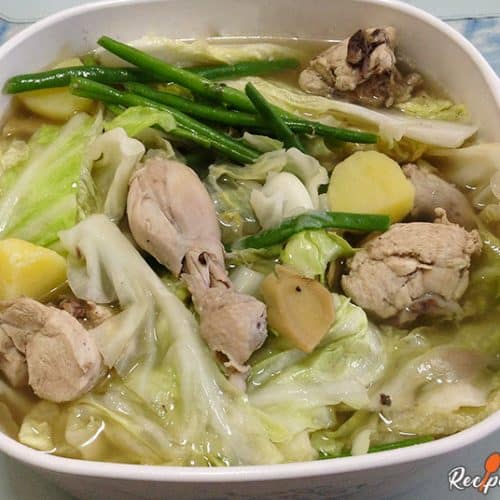
Pesang manok recipe is similar to chicken broth-based dishes such as Tinola (which uses sayote or papaya and chili leaves in its recipe) and Nilagang Baka (which has cabbages and saging na saba) and it is possible that you could interchange the three dishes.
However, what distinguishes pesang manok from the others is the recipe’s extensive use of ginger, bok choy, napa cabbage, and potatoes.
These, if we talk about the vegetables thrown into the mix, make this dish a heavy and healthy meal.
Pinaputok na tilapia
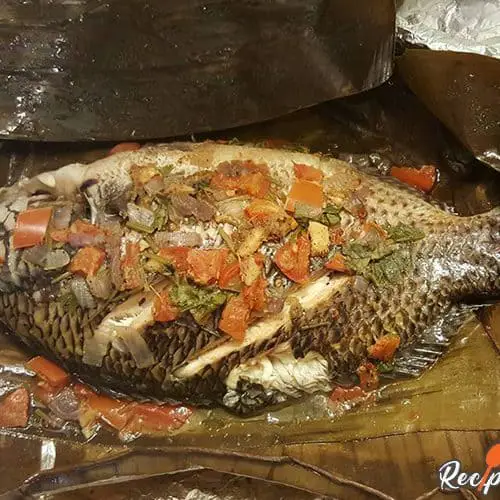
As the recipe lends itself to naming its main ingredient in the name itself, pinaputok na tilapia recipe is made of tilapia stuffed with different ingredients such as sliced onion, ginger (luya), tomato, spring onion , and soy sauce.
To make the fish tastier, one can marinate it using freshly squeezed calamansi juice. You can spread the juice generously before putting in the ingredients to be stuffed.
You can also garnish the top of the fish with the stuffing. The tilapia is then covered with banana leaf and aluminum.
Sinanglay na tilapia
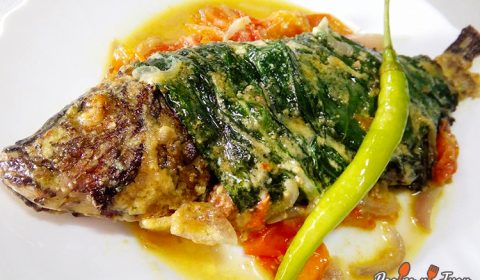
What distinguishes Sinanglay na Tilapia from other recipes is that before stewing the tilapia into a pot full of coconut milk (or reverse), you need to first cut and gut the tilapia and stuff it with the other ingredients such as sliced ginger (luya), onions , and tomatoes much like how you would stuff the Tilapia in Pinaputok na Tilapia.
However, once you’re done with stuffing the Tilapia, unlike in other recipes where you can leave it unsewn or uncovered, in sinanglay recipe, you will have to cover up the Tilapia with Gabi or Pechay leaves and tie it up with lemongrass stalks so that the filling will not burst out once you start simmering it in the pot.
Ginataang tilapia
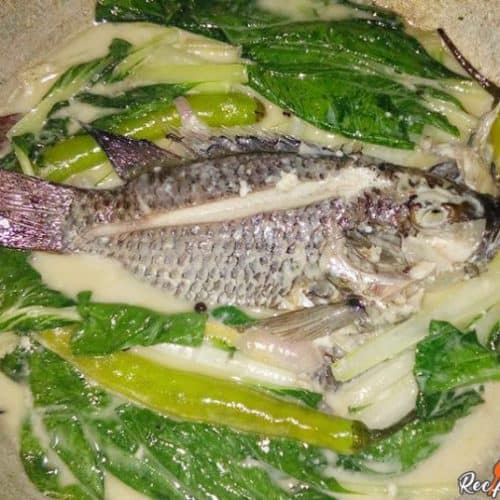
Here’s the first step of preparation—cooking the tilapia fish:
- Put cooking oil in a pan and heat it to a high temperature to prevent the tilapia from sticking to the pan.
- Flip each side to give the tilapia an even cook.
- When adding more than one tilapia, wait for at least 10 seconds before adding another. This helps keep the heat in the pan.
- The next step is, while you’re cooking the tilapia, sauté the garlic and ginger with the tilapia until it turns a golden brown color. But make sure that while sautéing the garlic, you don’t burn the tilapia.
- Afterward, once the garlic has been sautéed, add chopped onions and sauté them with the garlic and the frying tilapia.
- Once the garlic and onions have been sautéed, and the tilapia is cooked, add the coconut milk (ginataan). Simmer the ingredients for the ginataang tilapia until the coconut milk becomes thick. Once it’s thick, you can serve it on a plate, eat it with rice, and enjoy a great meal!
Ginataang Salmon Filipino style
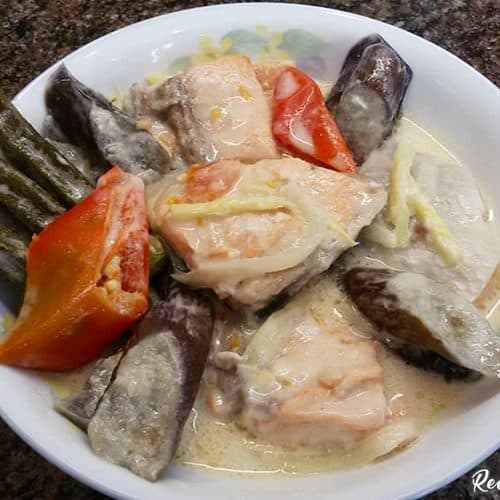
Leave the coconut milk aside and start sautéing the ingredients. First, the garlic and the onions, the long green chilies, and the salmon itself.
Finally, you add the coconut milk and the eggplant. Add salt and pepper to taste and let it simmer until it is cooked.
There are different versions of this dish depending on where in the Philippines the dish is cooked.
Bicolanos will prefer it with red chilis to make it extra hot, and some would ditch the eggplants. To adjust the consistency, you can also add water to make it brothy.
Filipino Laing with taro leaves
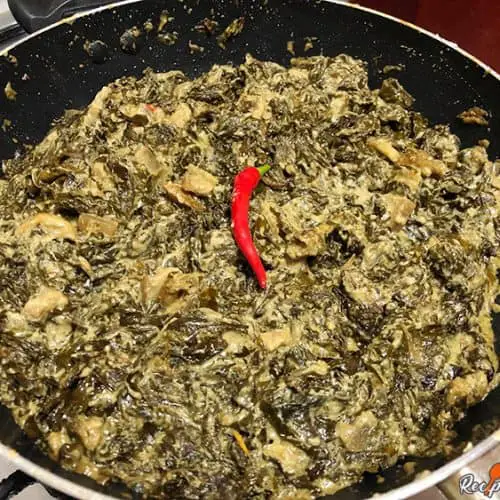
The sauce is prepared first. This is done so that all the flavors of the ginger, (luya) shrimp paste (bagoong), and garlic are well blended and incorporated. The shrimp paste and coconut milk give an aromatic and savory laing sauce.
The secret to achieving a thick sauce is to avoid stirring the coconut milk. Mixing the gata or coconut milk will only make it watery.
This laing recipe can be made in advance and kept frozen for a week. Thaw and reheat before serving.
Paksiw na galunggong
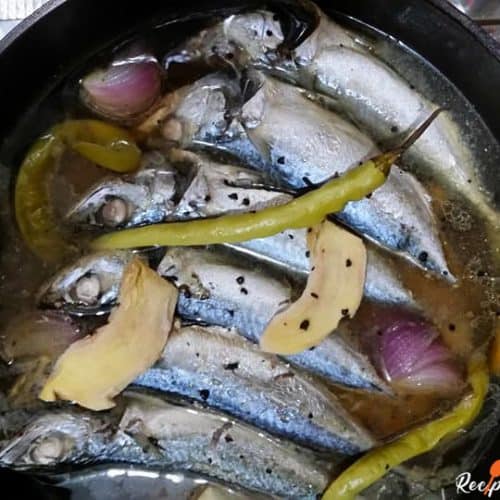
Galunggong is a widely eaten fish in the Philippines. In English, the Galunggong has been known as the Blue Mackerel Scad, Round Scad or Shortfin Scad, but these names have been applied to other fish of the Decapterus family as well.
In the Philippines, the fish is also referred to in shorthand as GG (pronounced in English as “gee-gee”). The Mackerel Scad, Decapterus Macarellus, is a species of fish of the family, Carangidae.
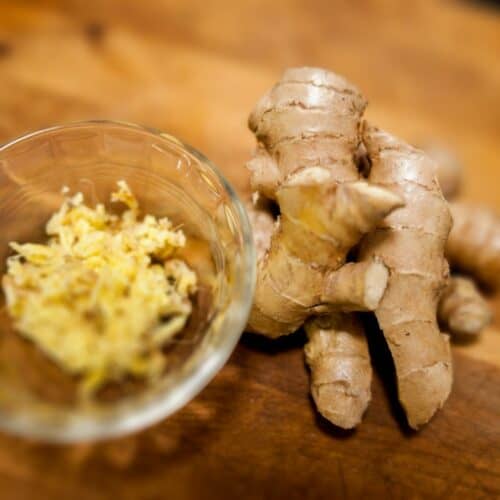
11 Best Recipes With Luya
Ingredients
- 4 cloves garlic chopped
- 1 medium onion diced
- 1 large tomato diced
- 1 thumb luya chopped
Instructions
Create a luya marinade
- In a bowl, combine garlic, onion, tomatoes, and luya then mix.
- Stuff a fish with the garlic, onion, and luya mixture or rub it on meat and let it sit for a while.
Let it simmer with luya
- Pour your ingredients for the sauce like soy sauce into your saucepan, then toss the spring onion, luya and garlic as well.
- This time add your pork or other protein into the saucepan along with the other ingredients and simmer it until much of the liquid has evaporated leaving only a sticky sauce that makes it look glossy.
What does luya taste like?
Luya has a slightly spicy, sharp, and tangy flavor. It is often used to add flavor to dishes, and can be used fresh, dried, or powdered.
What are some of the most common uses for luya?
Luya is used in many different cuisines, including Chinese, Indian, Thai, and Vietnamese, but the name is Filipino for ginger.
It is often used to add flavor to curries, stews, and stir-fries. Luya can also be used to make tea, or added to baked goods such as gingerbread.
How to cook luya
Luya can be used fresh, dried, or powdered. When using fresh luya, it is important to cut off the skin before using.
Best luya to buy
You can always buy fresh luya and cut it up, that’s the best way to cook with it. But if you don’t have it or are pressed for time when cooking, I like this minced ginger from the Organic Ginger People:
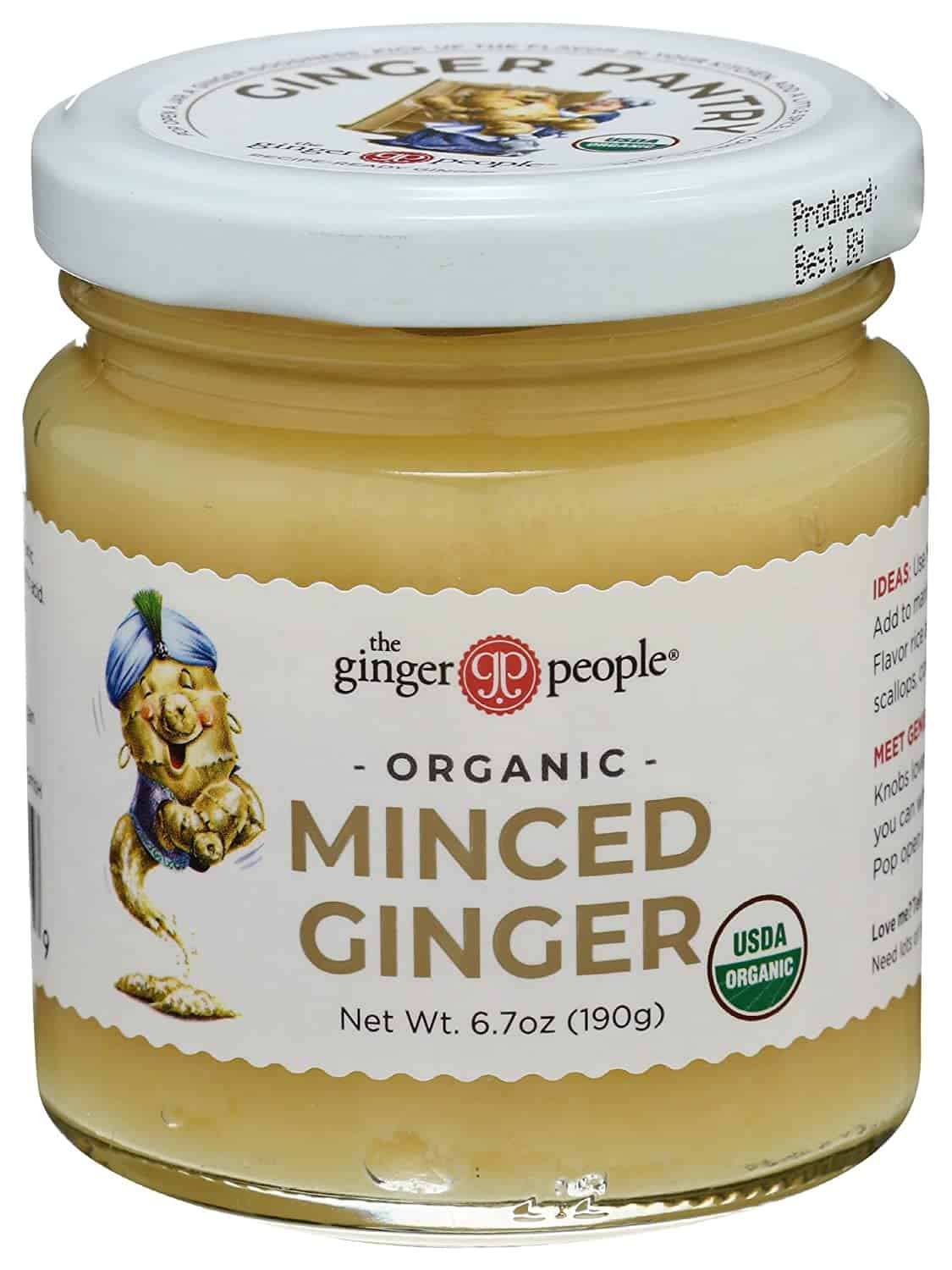
It has all the benefits of cooking with fresh luya, but you can store it in the container for much longer.
How to store luya
Luya can be stored in the fridge, wrapped in a paper towel, for up to three weeks. Alternatively, it can be peeled and grated, then stored in a sealed container in the freezer for up to six months.
How long does uncut luya keep?
Uncut luya root can be stored in a cool, dry place for up to three weeks. If it starts to sprout, it can still be used, but the flavor will be more mild. Once the luya is cut or peeled, it should be used within a few days.
Conclusion
There are many dishes you can make with luya so it’s a great addition to have in your pantry. Hope you’ll try one of these top recipes.
Check out our new cookbook
Bitemybun's family recipes with complete meal planner and recipe guide.
Try it out for free with Kindle Unlimited:
Read for freeJoost Nusselder, the founder of Bite My Bun is a content marketer, dad and loves trying out new food with Japanese food at the heart of his passion, and together with his team he's been creating in-depth blog articles since 2016 to help loyal readers with recipes and cooking tips.
